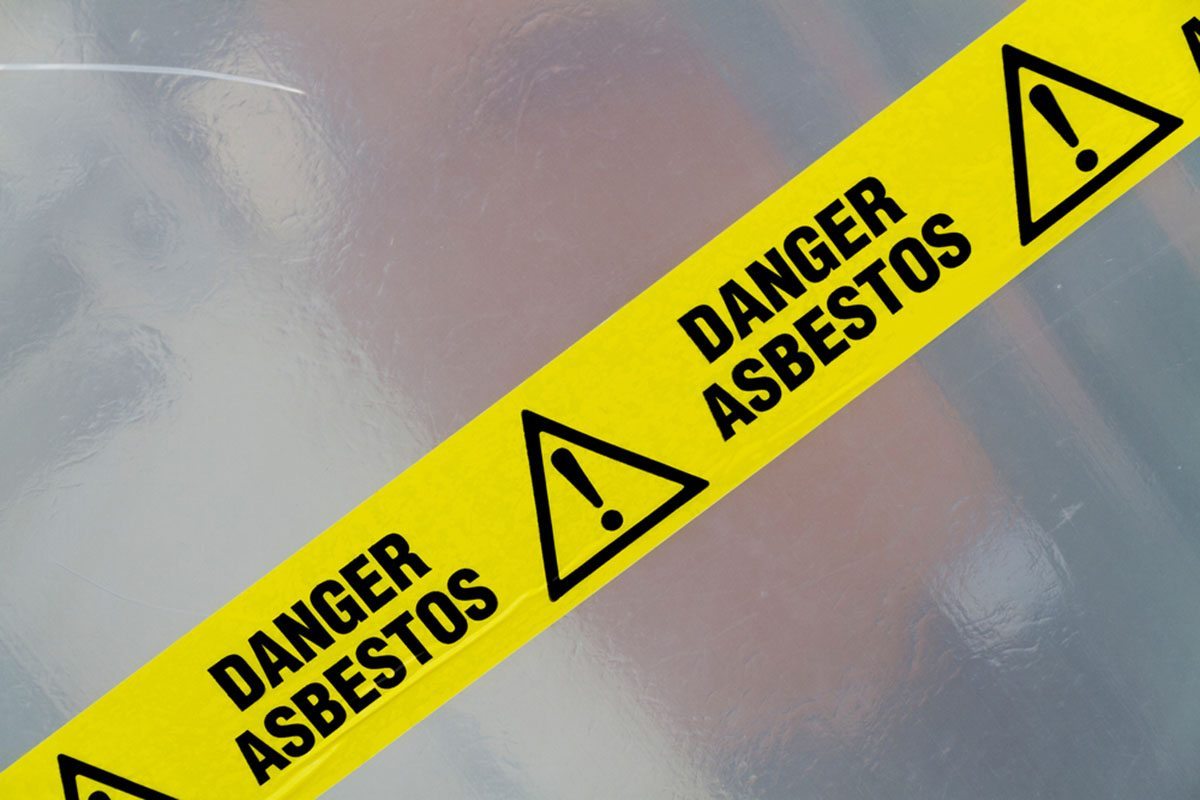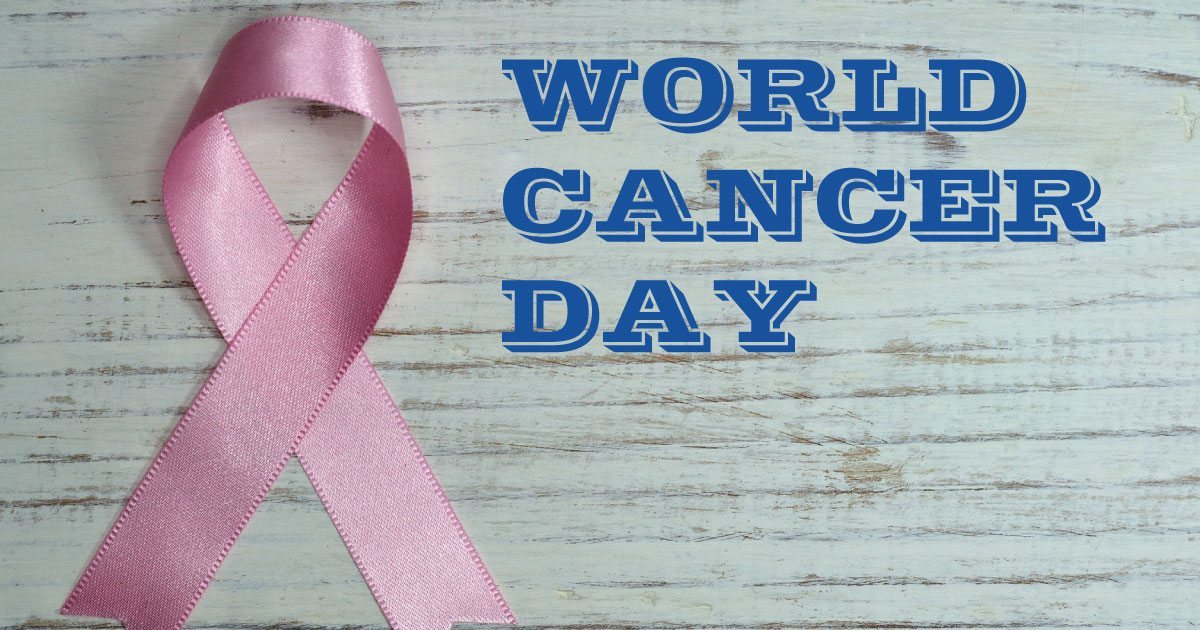Author: Nancy Meredith

My Frank
Before I met Frank, my knowledge of mesothelioma was restricted to the half-minute ad spots between old Jeopardy reruns that all seemed to be bought by hordes of law firms with tough-sounding names. Frank and I always watched Jeopardy together in his assisted living community and he always knew the answers to the most obscure trivia, a glint in his eye when he knew the Final Jeopardy answer I didn’t. Mesothelioma was to me, before the diagnosis, just another long word; another disease that seemed so foreign and ethereal. After the diagnosis, it was the scariest word in my vocabulary.
Frank had been complaining of tightness and difficulty breathing for weeks, but I figured it was just the cold snap we were having. Frank’s children were grown and lived across the country, so I took him to the hospital and we watched Trebek shake the hands of the winning contestant on the silent monitor as we waited for his doctor to give him his examination. Later that night, Frank called me to tell me the doctor had ordered an x-ray. I was surprised but Frank, with his characteristic Navy gruffness, said he wasn’t worried and asked if I’d give him a ride.
I was in class when I got the call. Frank would never call me during class saying, “You need to be in class in case you get a clue you can use in Jeopardy”, laughing with his eyes. I instantly knew something was the matter. He sounded so distant, so small. He said the doctor had seen something in his lungs, that they’d scheduled a biopsy for later that week, and if I would mind giving him a ride. The next few days were a blur. I thought the not knowing was the worst part, I know that it killed him to be so out of the loop. Honestly, it was not.
When Frank spoke the words, “pleural mesothelioma” I was relieved. Finally, we had an answer and could begin to tackle the disease. That night I did what any good Jeopardycontestant would do, I looked up as much as I could on mesothelioma on the internet. I will never forget the way I felt that night as I read; the deeper I investigated, the deeper the pit in my stomach grew. I wanted to run, I wanted to get away somehow, it was the first time I encountered despair.
Mesothelioma is a paradox. It is an extremely rare cancer caused by an extremely common material, asbestos, naturally occurring fibrous minerals found in certain types of rock formations. Asbestos has been used by humanity for decades because it is fire resistant and impervious to the elements; the ancient Egyptians even used it to wrap their mummies. It was this same material that was in my best friends’ lungs, suffocating him as it threatened to sarcophagize him. I remember looking up the asbestos molecules and seeing what looked like a cluster of tiny crystals, beautiful and deadly barbs that I knew were responsible for Frank’s condition. My mental anguish intensified as I saw that online there were mostly only support groups for mesothelioma and not a lot of treatments.
The median 5-year survival rate of people with mesothelioma is 5% according to the NIH SEER program. I couldn’t grasp this then, and I still can’t grasp it now. How do you measure 5% of a life? If you took 5% of all the laughs he shared, 5% of all the old Navy stories he had, 5% of every Jeopardy question he answered it’s still not enough to convey the magnitude of his being. I got very sad thinking about my friend’s fate.
Then, I got angry. Why him? Where did it come from? How was he exposed?
Asbestos in the United States has a long and troubling history. Since the industrial revolution and the advent of mechanized mining of asbestos, asbestos has been used in many commercial applications like insulation for pipes, wiring, and buildings. When the United States started taking the position as a world power, it increased its dependence on this deadly material. Hundreds of tons were used to insulate ships, war planes, and command centers throughout our history of conflicts from WWI to Vietnam. Asbestos activity is not limited to our activities abroad, but it has been used in roofing, housing insulation, even the very ceiling tiles over your head right now. Asbestos is everywhere and it is deadly. As for Frank, I’ve come to terms with the fact that I’ll never know where he was exposed. He was in Vietnam, but he also came home to work in construction, both very high risk occupational areas as far as asbestos exposure is concerned.
Frank was diagnosed with stage IV pleural mesothelioma and given only a year to live. He didn’t make it, but he fought hard. I remember when I asked him what he was going to do about it he told me he was going to play it like Final Jeopardy, “Wager big, and hope to God I know the answer.” He did wager big. He took on very heavy chemotherapy to try to kill the cancer. Towards the end of his life, through exhausting treatments, crippling nausea, and incredible wasting we would share his jell-o cups and sit in his room watching Jeopardy. As I looked over at him, too tired to get out of bed or even eat, I could still see that incredible mind at work and see that same glint in his eye as he answered Final Jeopardy. This is how I choose to remember him.
Works Cited
Centers for Disease Control. “Health Effects of Asbestos.” ATSDR. Centers for Disease Control. Web. 05 Oct. 2014.
http://www.atsdr.cdc.gov/asbestos/asbestos/health_effects/
“Education.” ADAO Asbestos Disease Awareness Organization. Web. 07 Oct. 2014.
EPA. “Asbestos.” Asbestos. Web. 05 Oct. 2014.
http://www2.epa.gov/asbestos
The Lancet. “Asbestos-related Disease: A Preventable Burden.” Asbestos Related Disease:a Preventable Burden. The Lancet. Web. 06 Oct. 2014.
http://secure.jbs.elsevierhealth.com/action/cookieAbsent
National Institutes of Health. “Asbestos: MedlinePlus.” U.S National Library of Medicine. U.S. National Library of Medicine. Web. 07 Oct. 2014.
https://www.nlm.nih.gov/medlineplus/asbestos.html
Occupational Safety and Health Administration. Asbestos Fact Sheet. OSHA. OSHA Asbestos Fact Sheet. Web. 6 Oct. 2014.
https://www.osha.gov/Publications/OSHA3507.pdf
Spirtas, Robert, Roger R. Connelly, and Margaret A. Tucker. “Survival Patterns for Malignant Mesothelioma: The Seer Experience.” International Journal of Cancer 41.4 (1988): 525-30. Web. 6 Oct. 2014.
About
 Fernando Salazar is a Biology and Latin American Studies Major and I’ve been doing research on Infectious Diseases for the last two years. I hope to pursue this passion to become and Md/PhD focusing on infectious diseases. I have a personal connection to this topic and I wanted to raise awareness of Mesothelioma and the ubiquitous nature of Asbestos.
Fernando Salazar is a Biology and Latin American Studies Major and I’ve been doing research on Infectious Diseases for the last two years. I hope to pursue this passion to become and Md/PhD focusing on infectious diseases. I have a personal connection to this topic and I wanted to raise awareness of Mesothelioma and the ubiquitous nature of Asbestos.

My Envisioned Medical Practice: Treatment of Mrs. Laura Hill
This morning, I have a new patient. She is a 64-year-old retired teacher named Laura Hill and the referral from her PCP says she complains of shortness or breath, chest pain, and coughing. I pull out my stethoscope and warn Mrs. Hill that it might be a little cold as I begin checking her breathing.
As I examine Mrs. Hill, she says “Please call me Laura,” and tells me she retired just last year after working in the same elementary school for 35 years. Laura tells me how much she misses the children at school, but that she just was unable to keep up like she used to. “I’m ready to start taking tropical vacations with her husband and spend time with her six grandchildren!” she exclaims. My patient knows she’s in the office of an oncologist and is definitely expecting the worst. I let her know her breathing is a little irregular and that we will have to get an ultrasound. She seems concerned but hopeful.
Two days later, when the ultrasound results indicate a malignant formation on Laura’s left lung, she asks me what we can do. I inform her immediately that cancer isn’t something anyone should try to battle alone and that she should rely on family for help. I stress the fact that psychological support is 50% of the battle. I gently let her know that pleural mesotheliomas have a poor prognosis- about a year- but that there are several options. I try to make Laura as informed as possible, both verbally, but also on paper, because I understand news like this doesn’t make it easy to remember things. First of all, I explain to her how cancer works, keeping in mind that she might be unfamiliar with some of these scientific concepts. I proceed to tell her about the standard and non-standard therapies.
I explain to Laura that standard medical care for mesothelioma includes surgery and chemotherapy, potentially as well as various other drugs, but because of the placement of her tumor near the spine, surgery is dangerous and because of the poor mesothelioma prognosis, chemotherapy would decrease her quality of life without significantly prolonging it. “Well what’s the point in trying to be ‘standard’ if none of that will work for me,” she asks. I proceed with the alternative therapies.
I inform her first and foremost that these next few options are not FDA approved, but have still proven effective in some cases. Laura asks, “Why do people try these if they aren’t approved.., It seems like I don’t have any chance of fighting this thing either way.” I quickly tell her not to give up so quickly and I explain that many people, including a patient, James Rhio O’Connor, who practiced these non-traditional methods and actually lived more than six years past his prognosis. I teach Laura about complementary methods that are used with the standard ones, such as acupuncture or acupressure and about alternative medicine, which has been used instead of standard medicine and has been heavily based on mind-body medicine. Laura asks me to elaborate
and I tell her that there are several, though not many, clinical trials testing these methods, including music therapy, fish oil, pomegranate, tangerine, and yoga.
“Well, what do you think I should do,” Laura inquires. I tell her that she should chose what she is most comfortable with because she is the one undergoing the treatment and coping with the disease. I continue that though there have been more studies conducted for standard medicine therapies, there have also been success stories with traditional medicinal and folk medicine. “Laura, I will give you all the information necessary so we can make a treatment plan together along with your primary care doctor and family,” I express.
We continue our discussion. When Laura asks why there is a lack of research for alternative therapies I tell her that there is a lack of funding, time, and institutions who are willing to conduct this work. She asks me if it has to do with money. “Doesn’t it usually,” I reply. I mention to her how it costs nearly $400 million to bring a new cancer drug to the market, whereas natural medicine is difficult to patent and therefore tough to make money from. Laura disapprovingly shakes her head and tells me “I want to do it the natural way. Humans were able to be healthy long before pharmaceutical companies were invented and I want to try that, but I have a feeling my insurance will frown on that.” I tell her that insurance companies are actually starting to accept more of these non-standard cancer treatment methods, but that it is certainly something that could be improved in our healthcare system. I go to my computer and print out for Laura a few articles from scientific journals that stress the importance of nutrition in the diet.
The next day, she comes in with her primary care physician and husband and the four of us sit down together and go through her treatment plan. “I’m actually feeling quite hopeful about this,” she says with a slight smile. I think to myself what an amazing attitude this woman has had. We all agree that she will maintain a mostly vegetarian diet that will be supplemented with vitamins, minerals, essential amino acids, fatty acids, and enzymes, which her PCP and I had found in our research the prior evening. After answering Laura and Mr. Hill’s questions, I stand up to open the door for them. Laura hugs me and confidently says, “You say months… I say years.”
About
 Elena Corina Andriescu
Elena Corina Andriescu
I am very excited to graduate from the University of Pittsburgh and start an inspiring career in medicine! My goal is to ultimately practice medicine in a predominantly African American residentially segregated area. These neighborhoods are often plagued by old housing that contains asbestos, so garnering a comprehention of mesothelioma and its potential medical cares is crucial for me. I thank Mesotheliomahelp.org for this opportunity and I look forward to continuing my education about cancer for a lifetime to come.

The Dangers of Asbestos
by Ashley Barasa
Asbestos has been making an appearance in the media lately, with legal companies advertising the dangers related to asbestos exposure and how potential clients out there in the workforce have been wrongfully endangered. The only problem with this new emphasis to asbestos in the media is that it raises more questions than answers, and as someone who is not in the manual labor field, I assumed that this asbestos information did not apply to me. I was so wrong. There are so many people out there- myself previously included- who don’t know just how much asbestos is really used in America today, the dangerous consequences of using asbestos, or the smokescreens that major corporations have tried to create in order to save profits. Many people don’t even know what asbestos is. My intentions with this paper are to shed some light on a subject that we as a population should all be more aware of.
So what exactly is asbestos? Asbestos is actually a broad term, and it is used to describe six naturally occurring silicate minerals that are fibrous in their structure, and are more fire-resistant and acid-resistant than most other materials. This resistance is what makes them so appealing. In fact, they are also resistant to applied pressure, because when forces are applied to asbestos, their fibers just break up into smaller fibers, and this continues on to a microscopic scale. Because asbestos is so durable and resistant to high temperatures and stress, it is ideal for industrial products. It is often used for insulation, roofing shingles, automotive parts, cement mixtures, and numerous other industrial type products. It is sometimes even used in textiles.
Unfortunately, what makes asbestos so appealing- its properties and chemical structure- is also what makes it so deadly. Remember how when pressure or stress is applied to asbestos, it just fragments all the way down to microscopic fibers? Well these microscopic fibers then go airborne and people exposed to asbestos breathe them in. Due to the microscopic fibers’ small size, the human immune system has a difficult time detecting them, and from here, the lung problems develop into major health issues. Some of these health issues and diseases obtained from asbestos exposure are asbestosis, which is the scarring of the lungs and decreased respiratory function, lung cancer, and mesothelioma, which is a cancer of the tissue that surrounds the lungs, heart, or abdominal cavities. Even worse, it takes a considerably long time before any diseases from asbestos exposure manifest themselves. It takes approximately 15 years for asbestosis or lung cancer to show, and 30 years for mesothelioma. Keep in mind that the clock starts after just one occupational exposure to asbestos.
Asbestos has been used for millennia, going all the way back to ancient Greco-Roman times. It was noted even back then for its durability and dangerous health effects, for the Greeks had named this material “inextinguishable” and the Romans wrote how the slaves who worked with the asbestos suffered from “sickness of the lungs”. However, the Greek and Roman authoritative figures were so impressed by the properties of asbestos that they ignored the dangerous side effects. Unfortunately, today much of that same behavior is still being exhibited. Likewise, any discoveries of the correlation between asbestos and poor health are more like re-discoveries that we are barely starting to pay attention to.
Continuing on into asbestos’ history, during the Middle Ages and for a considerable time after that, the use of asbestos was in decline. It did, however, make its appearance in the 1700s and became incredibly popular during the Industrial Revolution of the 1800s. During this time, asbestos was used for lining steam pipes, turbines, boilers, ovens and other equipment exposed to high temperatures. With such a high demand, many cities throughout the United States became mining cities for asbestos or manufacturing sites for asbestos-containing products. The first major production site for the U.S. began in 1894 in Georgia. From this point on, asbestos mining and manufacturing cities continued to pop up throughout the country for the next 100 years. Production of asbestos in the U.S. was at its peak in 1970s, but even then, our consumption far outweighed our production. For instance, in 1973, the absolute pinnacle in U.S. asbestos production, the country consumed approximately 803,000 metric tons of asbestos, of which 718,000 tons had been imported from other countries (ProQuest Discovery Guides; Asbestos in the United States: Occurrences, Use, and Control, 2008).
It wasn’t until the beginning years of the 1900s that people began to take notice that workers who had been exposed to asbestos were dying unnaturally young. There were also an unusually large number of deaths and lung problems in the towns that mined asbestos. Around this same time, in 1924 to be precise, England was conducting research on the relation between lung diseases and asbestos. They came to conclude that asbestos was the cause for their workers’ early deaths and so, in the 1930s, England passed laws that ordered for more ventilation and that declared asbestos exposure responsible for work-related diseases. The United States would not come to these conclusions for another ten years.
Consequently, medical journals everywhere in the 1930s published research articles linking asbestos to lung cancer, but regrettably this critical information was eclipsed when the discovery of silicosis came out. Silicosis is a lung disease caused by the inhalation of silica dust and when the exposed workforces found out, employees collectively sued their employers for more than $300 million. This served as a major revelation for employers exposing their workers to asbestos, but instead of coming clean, they hid the dangers related to asbestos exposure. They continue allowing asbestos in the work environment despite the advent of alternatives such as man-made fiberglass. Their workers were unaware of the dangers they were being exposed to on a daily basis.
It wasn’t until the 1970s that people began to heed the warnings concerning asbestos. In 1986, progress was finally made when the Asbestos Hazard Emergency Response Act (AHERA) became law, requiring all schools to inspect their buildings for asbestos and make the necessary abatements and repairs. It also made it mandatory for asbestos control professionals to take proper initial training, with training once every year afterwards. Then in 1989, the U.S. EPA banned most asbestos containing products, but this ban was overturned by the 5th circuit court of appeals in 1991. However, even with the overturning, some things remain banned, such as flooring felt, specialty paper, and anything that did not historically contain asbestos. Finally, in 1993, the last asbestos mine in the country was shutdown.
In more recent years, the “Ban Asbestos in America Act of 2007” bill was introduced into congress in March of 2007. This bill specifically prohibits the manufacturing, importing, processing and distribution of any products containing asbestos, and it also redefines asbestos so that it includes more than 6 silicate minerals. This bill was unanimously passed by the senate in October of 2007, but once it reached the House of Representatives, it lost momentum. The only action the House has taken in regards to this bill was a hearing by a subcommittee in early 2008.
Would you expect that U.S. products containing asbestos is a rare occurrence? Well, think again. Not only is asbestos still being used, but it’s being incorporated into common everyday household products and even toys. You might see it today listed under the label of Chrysotile Mineral Fiber. Chrysotile is one of the 6 types of naturally occurring silicate minerals that asbestos is used to describe, as mentioned earlier (ProQuest Discovery Guides; Asbestos in the United States: Occurrences, Use, and Control, 2008).
If that’s not scary enough, every year, there are on average 10000 people in the U.S. that die from asbestos related conditions, and there are 3000 people that are diagnosed with mesothelioma. That rate of 3000 people being diagnosed every year has been the same rate for the last 30 years (Surveillance Epidemiology and End Results (SEER) Program at the National Cancer Institute, 2013), meaning that despite advantages in treatments, there has been no decrease in its occurrence. Additionally, there is still no cure for mesothelioma, and any improvements in the survival rates of people diagnosed with mesothelioma is most often attributed to the person’s age and how early they were diagnosed.
The rate of asbestos consumption in America has dropped from its peak of 803,000 tons in 1973 to 1,180 tons in 2011, but this number is much too high. There are more than 40 countries worldwide that have recognized how deadly asbestos is and have completely banned its usage, making the U.S. one of the only industrialized countries that has not followed this trend. Not only that, but using asbestos effects all of us in the sense that it takes a toll on taxpayers’ dollars. The cost for removing asbestos from schools, offices buildings, and stores runs in the millions of dollars. We need to come together to put a stop to asbestos in our country.

ASCO Offers Malignant Pleural Mesothelioma Treatment Guidelines
The American Society of Clinical Oncology (ASCO) is the world’s leading professional organization for medical professionals caring for cancer patients. The Society has a goal to improve the quality of care in the field of oncology. Now, to assist medical professionals managing patients with malignant pleural mesothelioma, the organization has just released new evidence-based recommendations.
In their newly released clinical practice guidelines, ASCO offers guidelines for diagnosis, staging, chemotherapy, surgical cytoreduction, radiation therapy, and multimodality therapy in malignant pleural mesothelioma (MPM) patients. According to the panel of experts, including Hedy L. Kindler, MD, of the University of Chicago, and Mary Hesdorffer, formerly the Executive Director of the Mesothelioma Applied Research Foundation, the recommendation addresses five “overarching clinical questions.”
- What is the optimal approach to obtain an accurate diagnosis of mesothelioma?
- What initial assessment is recommended before initiating any therapy for mesothelioma?
- What is the appropriate first- and second-line systemic treatment of patients with mesothelioma?
- What is the appropriate role of surgical cytoreduction in the management of mesothelioma?
- When should radiation be recommended for mesothelioma?
Pleural mesothelioma is a rare, painful cancer caused by exposure to airborne asbestos fibers. Treatments manage the symptoms to hold the cancer at bay, but there is no known cure for this deadly disease. Patients have a poor prognosis, and the median overall survival of patients with advanced surgically unresectable disease is about 12 months, according to ASCO. About 3,000 new cases are diagnosed each year in the U.S.
The ASCO team noted that “Given the rarity of this malignancy, there have been few large randomized trials, especially for surgical management of this disease.” Seeing a critical need to find and compile this information, ASCO convened a panel of experts, including thoracic, oncology and advocacy experts, to review medical literature published from 1990 through 2017 that included references to pertinent trials and studies.
Through the search of the literature, the team identified 222 relevant studies. After assessing the key areas of interest, including survival and quality of life, using evidence and informal consensus the team developed the evidence-based guideline recommendations.
The guidelines, published in the Journal of Clinical Oncology, include offering chemotherapy as a means for improving survival and quality of life for mesothelioma patients. The recommended first-line chemotherapy is pemetrexed plus platinum. However, the team recommends offering patients the option of enrolling in a clinical trial. Other chemotherapy recommendations include the addition of bevacizumab to pemetrexed-based chemotherapy for select patients, as well as pointing out risks for the use in some patients.
The panel “strongly recommends” a maximal surgical cytoreduction surgery for certain patients with early-stage disease. The recommendations note, however, that surgery is just one modality and chemotherapy and/or radiation should also be administered.
See the Journal of Clinical Oncology for all of the mesothelioma recommendations.
ASCO states that “clinical practice guidelines are intended to improve the quality of cancer care by helping oncologists make choices about treatment, prevention, supportive care, or follow-up in line with the best available evidence from oncology research.” ASCO notes that the guidelines are voluntary and do not account for variation among patients or the most recent evidence.
Sources:
- ASCO
https://www.asco.org/practice-guidelines/quality-guidelines/guidelines/thoracic-cancer#/29376 - Journal of Clinical Oncology
http://jco.ascopubs.org/content/early/2012/12/13/JCO.2012.44.6443.abstract

Putting Mesothelioma Front and Center on World Cancer Day
Today, February 4, is an international day set aside to unite the world’s population in the fight against cancer. With the tagline ‘We can. I can.’,” World Cancer Day 2018 is focused on how everyone – as a collective or as individuals – can do their part to reduce the global burden of cancer. This day is a fitting time to tell your friends, and anyone you meet, about mesothelioma and ways in which they can support the mesothelioma community in the quest to help find a cure.
World Cancer Day’s primary objective is to get as many people as possible around the globe to talk about cancer. Organized by the Union for International Cancer Control, the world’s largest cancer organization headquartered in Switzerland, the day “aims to save millions of preventable deaths each year by raising awareness and education about the disease, pressing governments and individuals across the world to take action.”
The day is a time to reflect on deaths caused by mesothelioma, a preventable cancer, and renew efforts to eliminate recognized cancer causes. With thousands of families across the globe losing loved ones to mesothelioma, it is the time to raise awareness of the slow-developing asbestos-caused cancer.
Mesothelioma is a serious disease diagnosed in close to 3,000 Americans each year. As with other environmental cancers, mesothelioma is an entirely preventable disease. Currently there is no known cure for the disease, but ongoing research is the key to finding the breakthrough that can mean the difference between life and death.
Today, about 125 million people worldwide are exposed to asbestos, primarily in the workplace or by living near factories that handle asbestos. Microscopic asbestos fibers can accumulate in the lung and cause mesothelioma, lung cancer and asbestosis, a chronic scarring of the lung.
There are nearly 500 events planned for World Cancer Day 2018. Check here for an event near you. In addition, donations can be made to a mesothelioma organization where your dollars will go towards mesothelioma research. Consider making a donation to the Mesothelioma Applied Research Foundation in honor of Don Smitley, who lost his life to mesothelioma. His daughter Jennifer Gelsick, who is a “Faces of Mesothelioma” author, and her family established a fund in Smitley’s name to help raise much-needed money for mesothelioma research. Contributions can be made in Don’s memory at www.curemeso.com/fundraising/smitley.
“World Cancer Day is a chance to reflect on what you can do, make a pledge and take action. Whatever you choose to do ‘We can. I can.’ make a difference to the fight against cancer.”
For more information visit WorldCancerDay.org.
Sources :
- Union for International Cancer Control,
https://www.uicc.org/ - Mesothelioma Applied Research Foundation
http://www.curemeso.org/ - Union for International Cancer Control
https://www.uicc.org/
Free Mesothelioma Patient & Treatment Guide
We’d like to offer you our in-depth guide, “A Patient’s Guide to Mesothelioma,” absolutely free of charge.
It contains a wealth of information and resources to help you better understand the condition, choose (and afford) appropriate treatment, and exercise your legal right to compensation.
Download Now